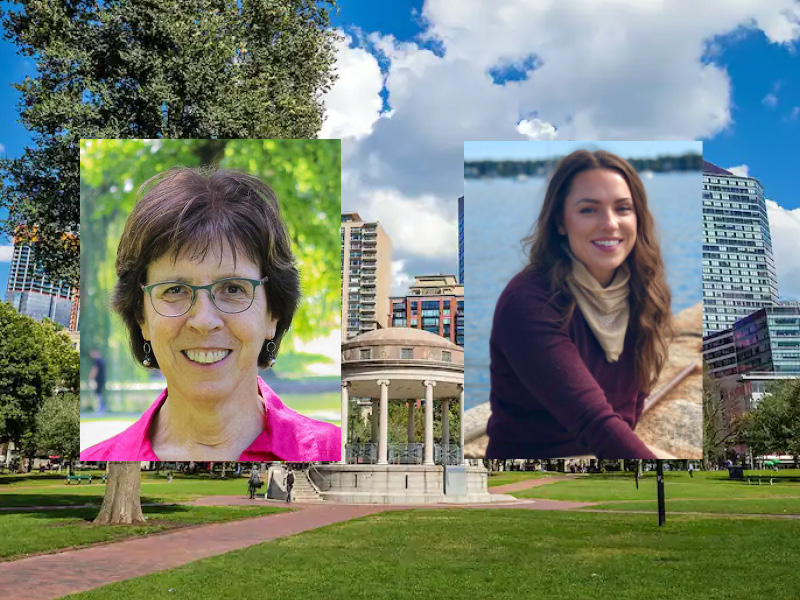
As World Landscape Architecture Month comes to an end, we sat down with President Liz Vizza and Director of Capital Projects & Parks Care Rebecca McKevitz to talk about all things landscape architecture. Both Vizza and McKevitz are certified ASLA landscape architects, and the Friends is incredibly lucky to have two leaders with a deep understanding of land planning, planting design, site analysis, and more as we care for Boston’s iconic urban oases.
What drew you to landscape architecture?
Vizza: In my 20s, I was living on Martha’s Vineyard, writing poetry and working as the Administrator for the Tisbury Planning Board and Conservation Commission. I saw firsthand the development threats to open space in a desirable, fragile place like the island, and wanted to do something that would support the right relationship between humans and the natural world. Happily I found landscape architecture, and the rest is history!
McKevitz: When I was in middle school, I remember asking “mom, who is the person that would design golf courses?” and “whose job is it to design playgrounds like the one at my school?” It became pretty clear that I was interested in design work, particularly design work that happened outdoors. Luckily, my family was able to help me piece together that this person would be called a Landscape Architect.
There is work for landscape architects at every scale and within every sector. This field is both creative and technical, requires collaboration and focused solo work, offers a great balance of in-field and in-office work, and provides endless opportunities for learning and growth.
What is most rewarding and most challenging about this field?
Vizza: The most rewarding is being able to create spaces that invite and delight people.
The most challenging – the lack of awareness that living things need care, and the inadequate resources for maintenance committed to public landscapes.
McKevitz: For me, the most meaningful part of this work is that the projects are beneficial for both people and our environment. The biggest challenge has always been finding solutions that do the most good for the greatest number of stakeholders, especially those that are often unheard or underrepresented.
Another challenge is the ongoing care and maintenance of our public landscapes. It is critical for landscape architects to consider both the maintenance capacity and the maintenance budget of their clients when designing, choosing materials, and constructing the space. This will keep these projects safe and usable into the future.
What is your favorite project you’ve worked on?
Vizza: There are so many, but I’d have to say that leading the team that prepared the master plan for Mount Auburn Cemetery in the 90s was a favorite – being able to protect a historic, sacred landscape that is also a business, and creating strategies to continue serving the community with new burial space while preserving its beauty and historic significance.
McKevitz: One of the most technically challenging projects I’ve worked on is the one-of-a-kind Rings Fountain on the Rose Kennedy Greenway. I managed a renovation project that involved replacing 156 static, white halogen lights with dynamic color-changing LED lights that would sync with the motion of the fountain jets. The final result is dramatic and playful, and has been described as looking like “paint flying through the sky”.
The Rings Fountain is a space that brings so many people together. Families, children, visitors, couples, friends, even unsuspecting passersby are captivated by the fountain and it provides a really beautiful venue for memory making.

